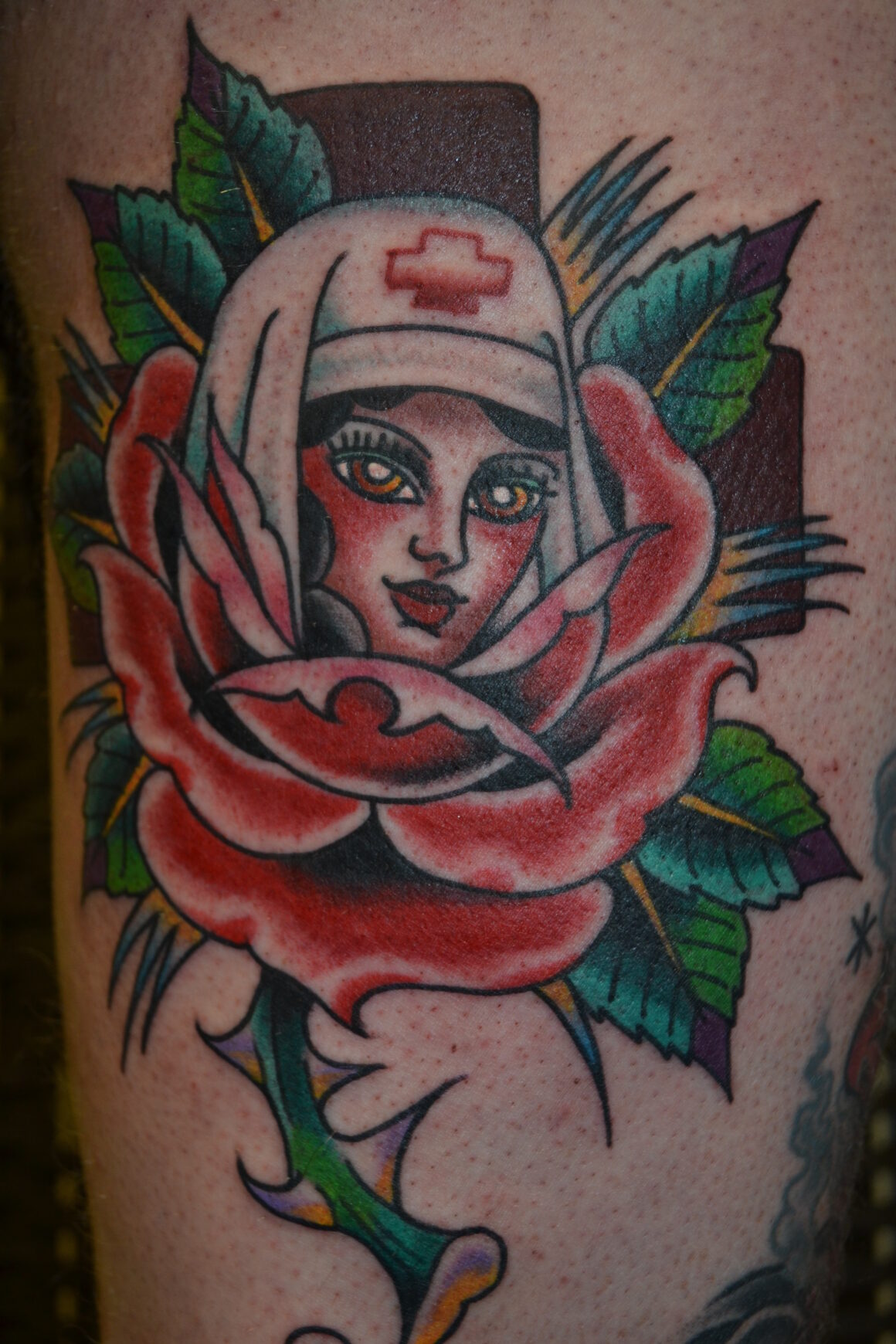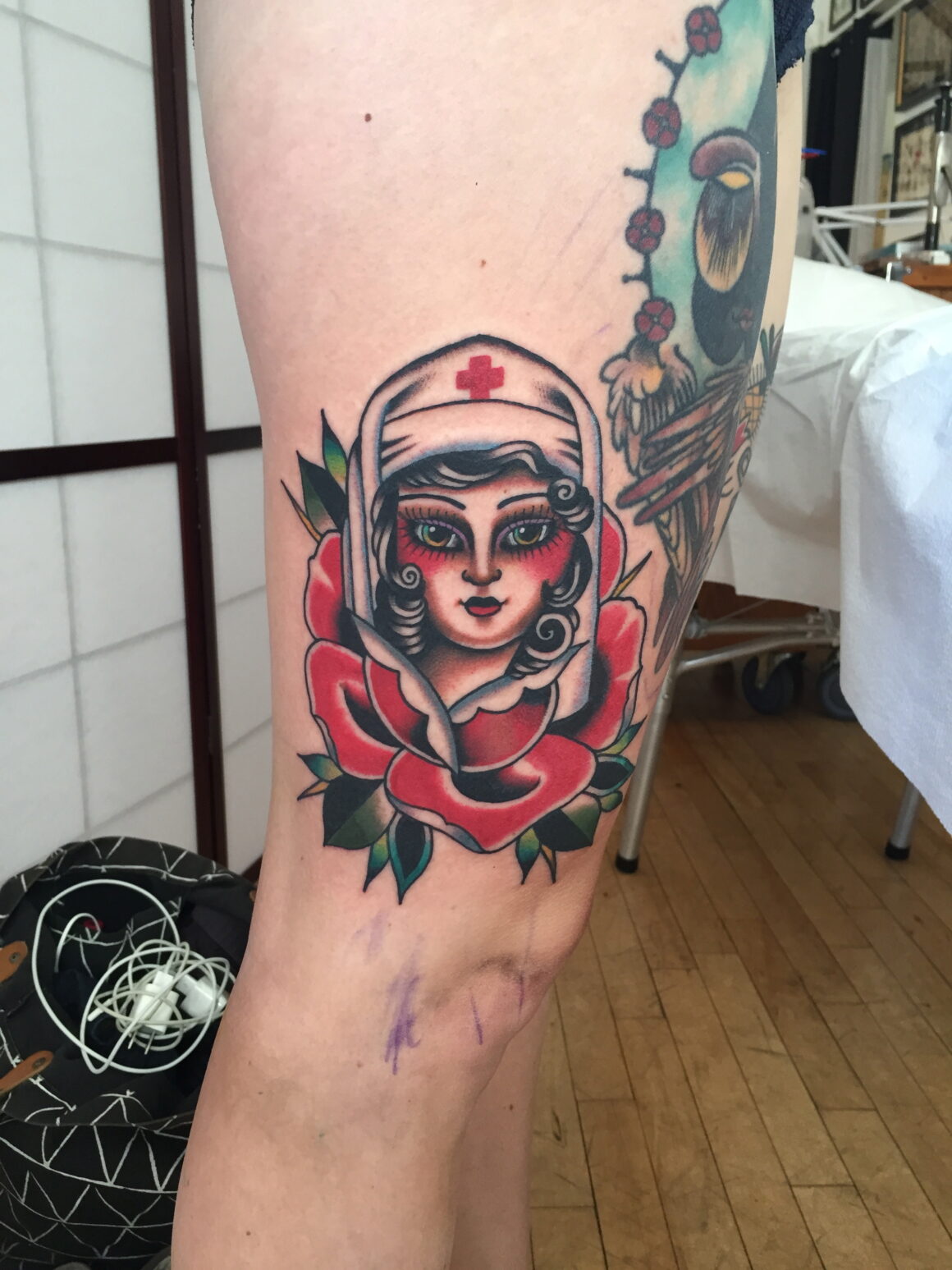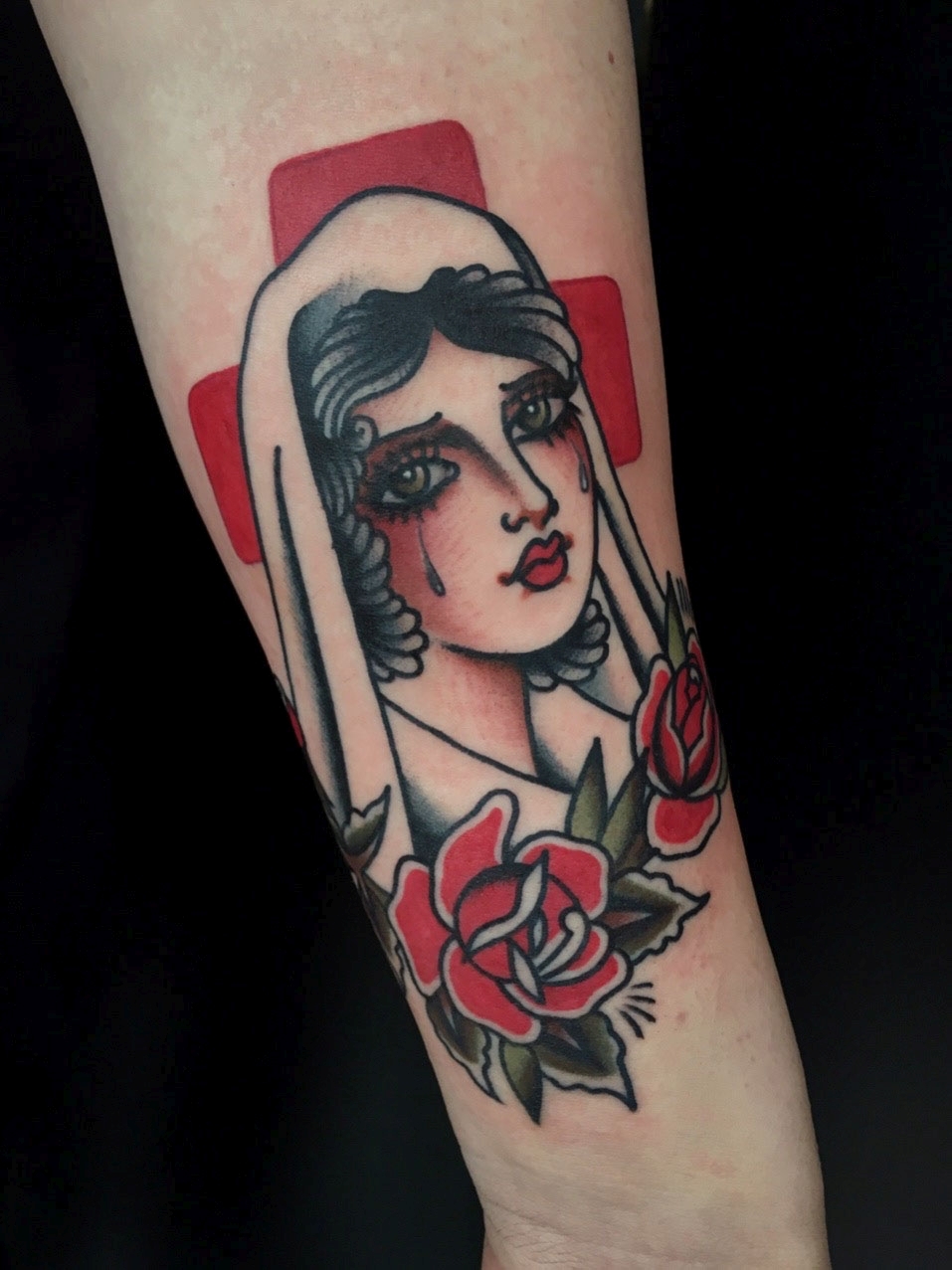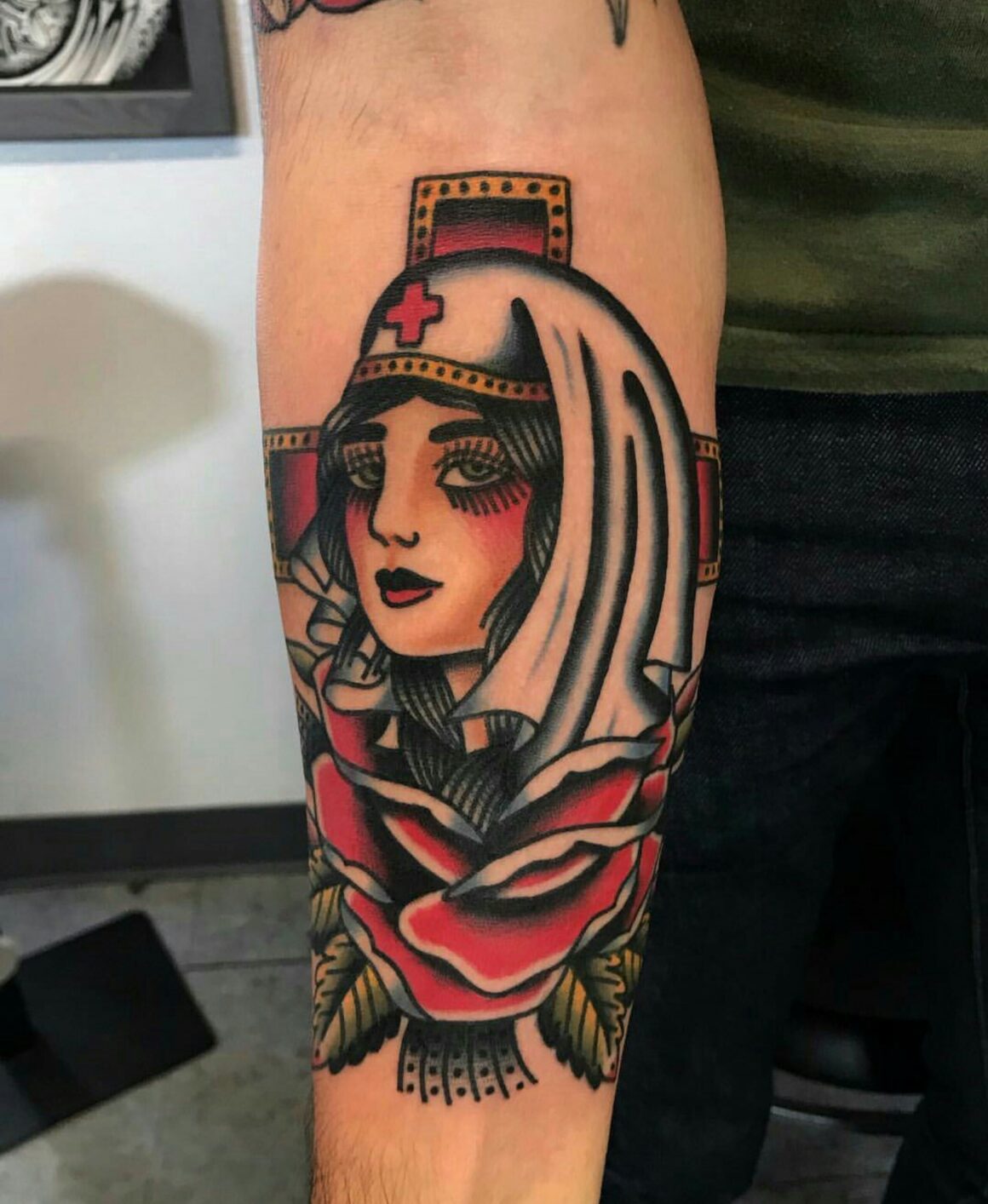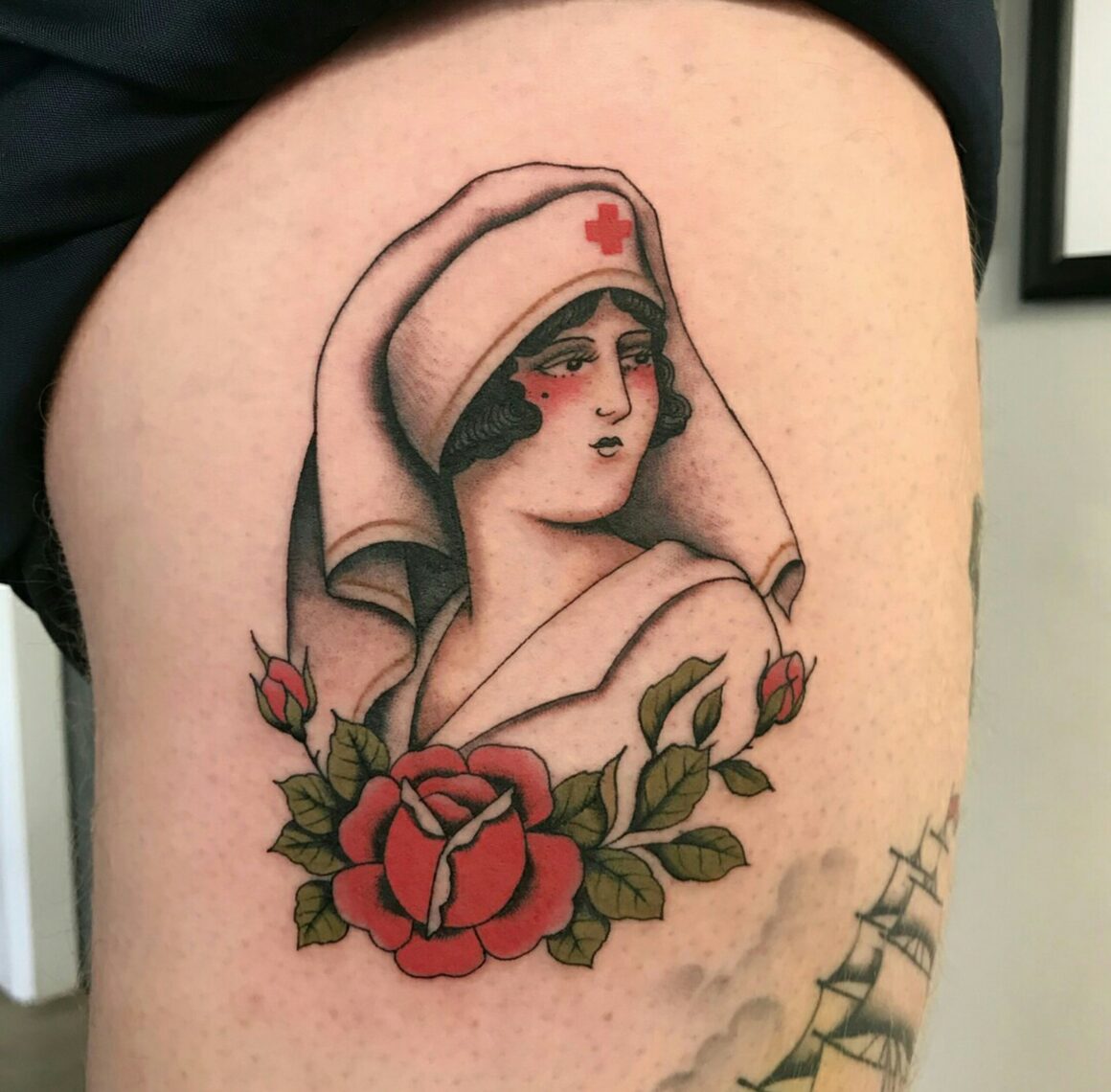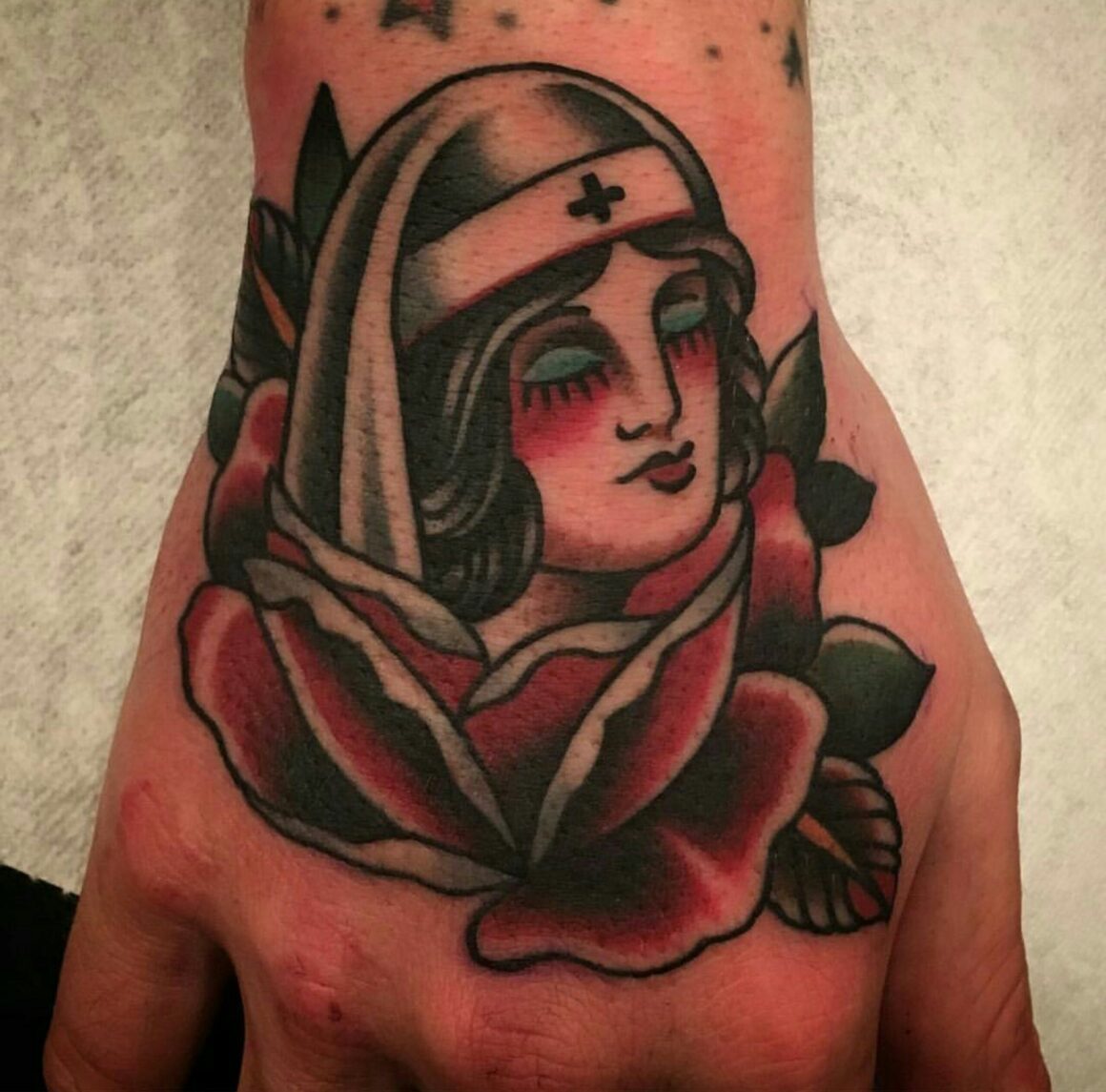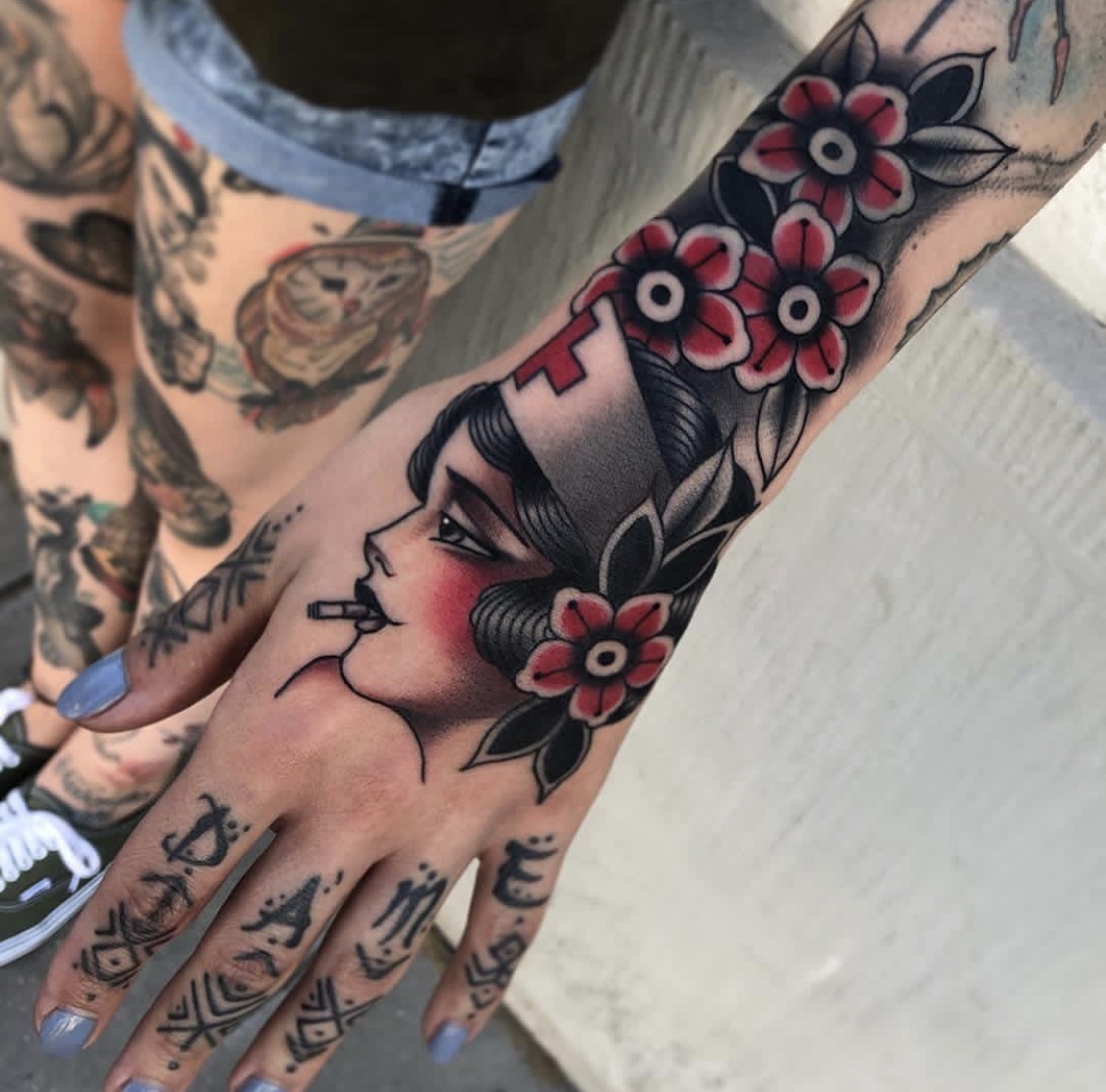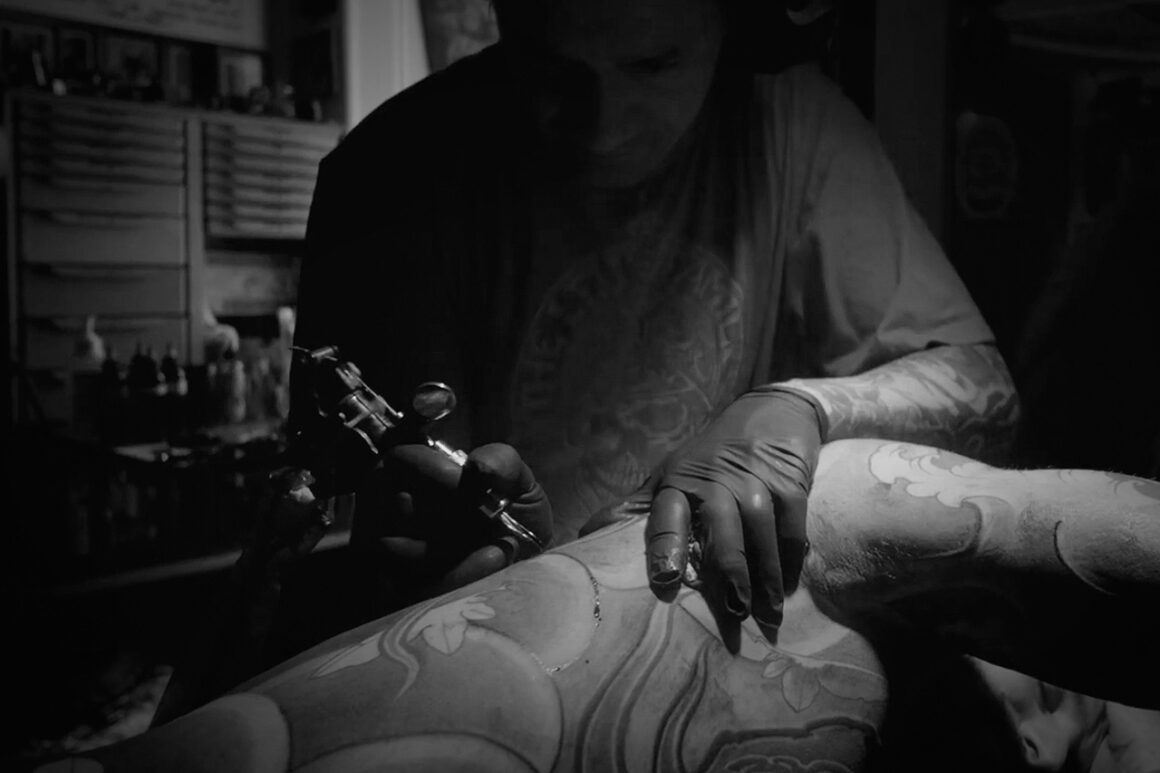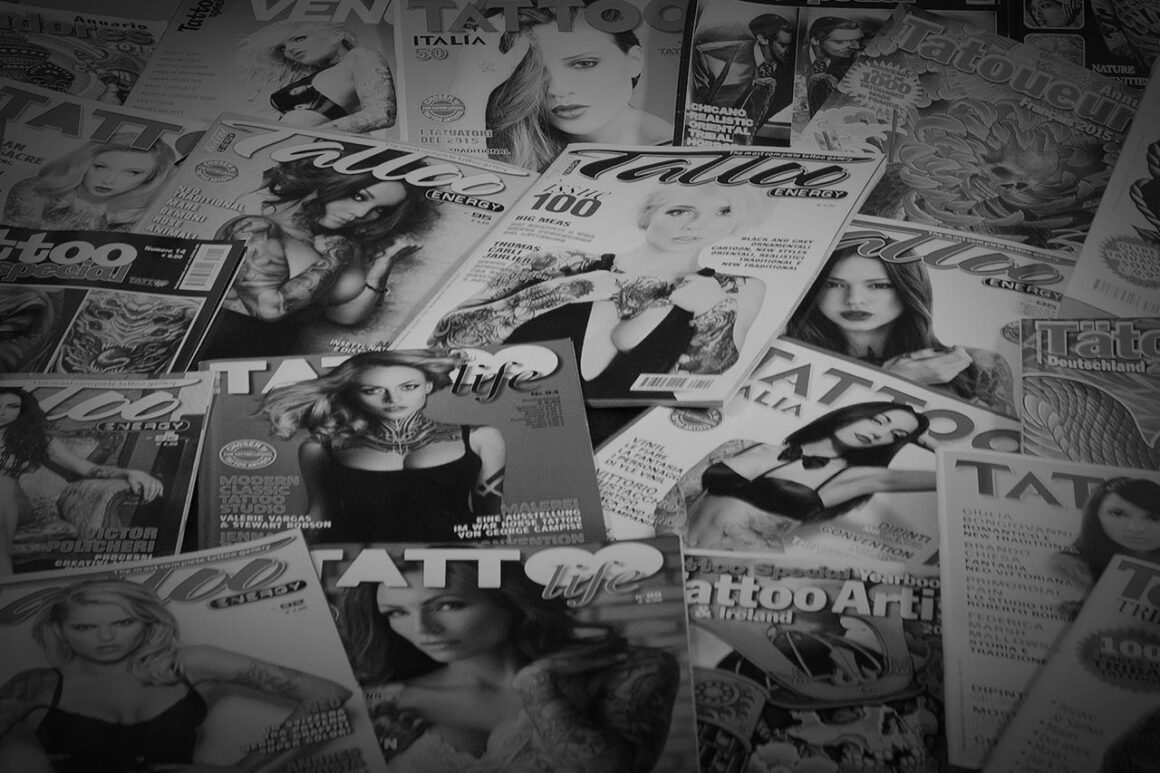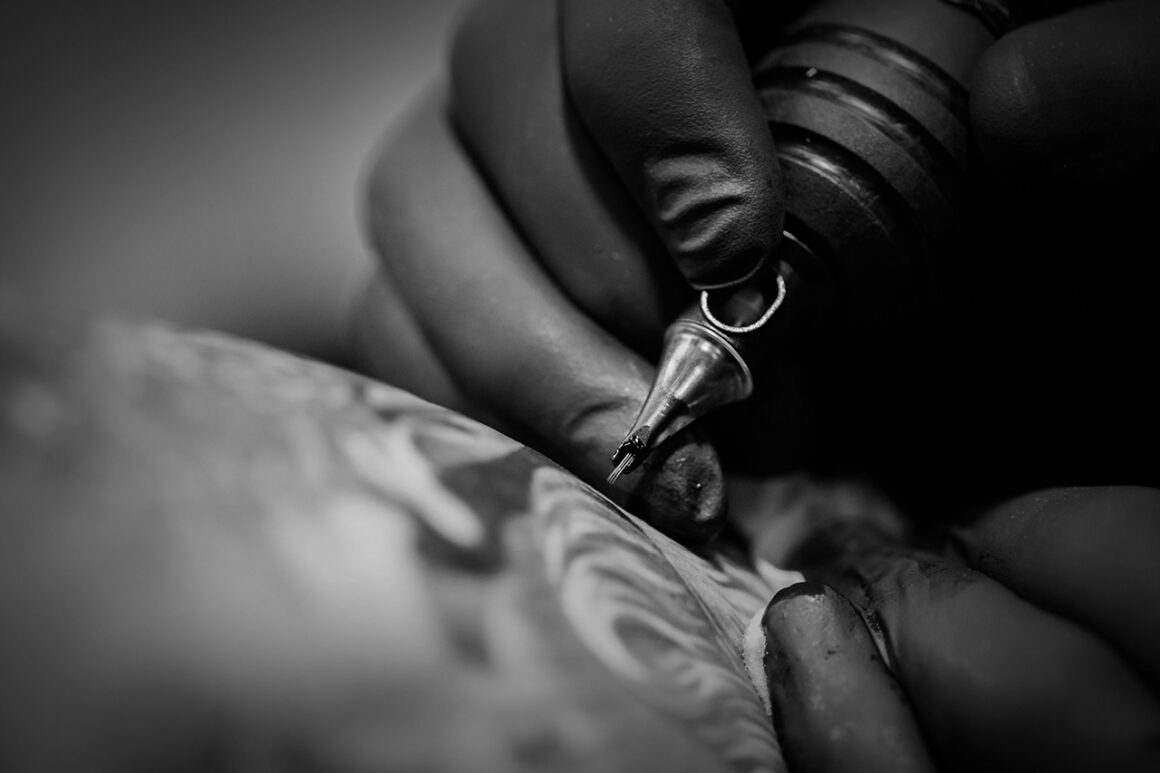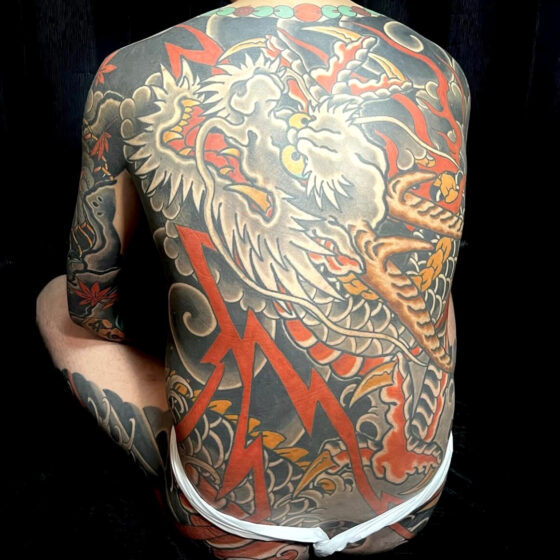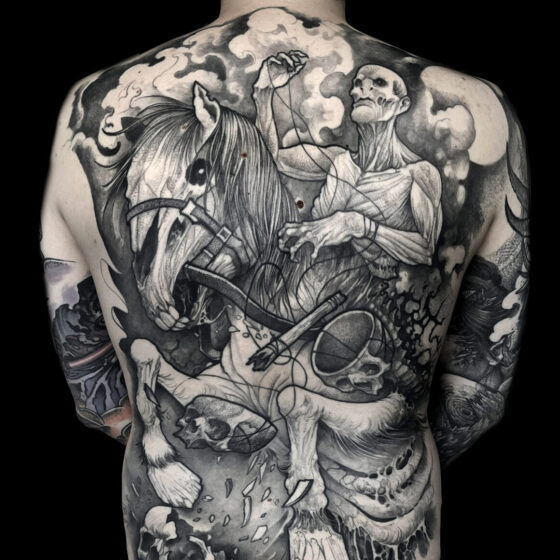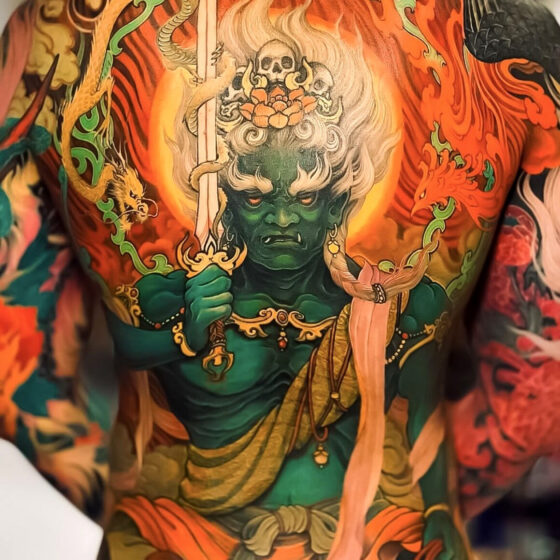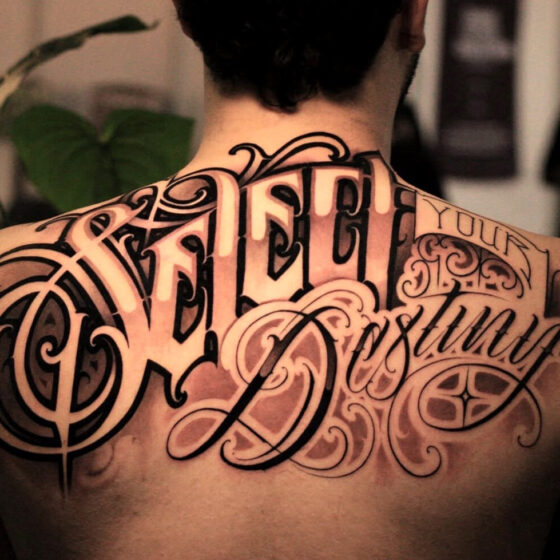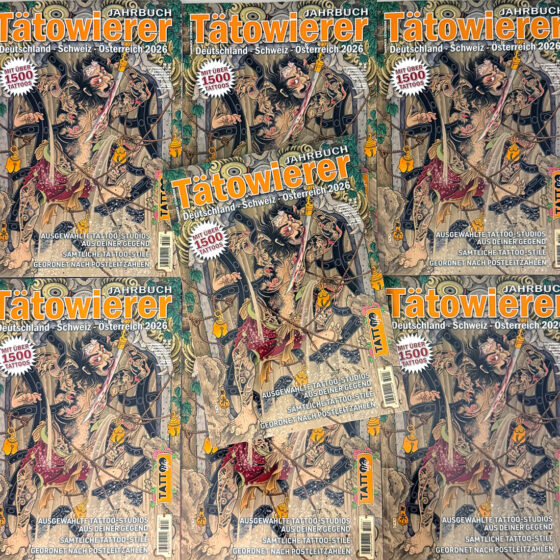It all began as a French song, but even in the third millennium, the Old School figure of the Red Cross nurse nested in roses is still the ultimate symvbol of caregiving and generosity.
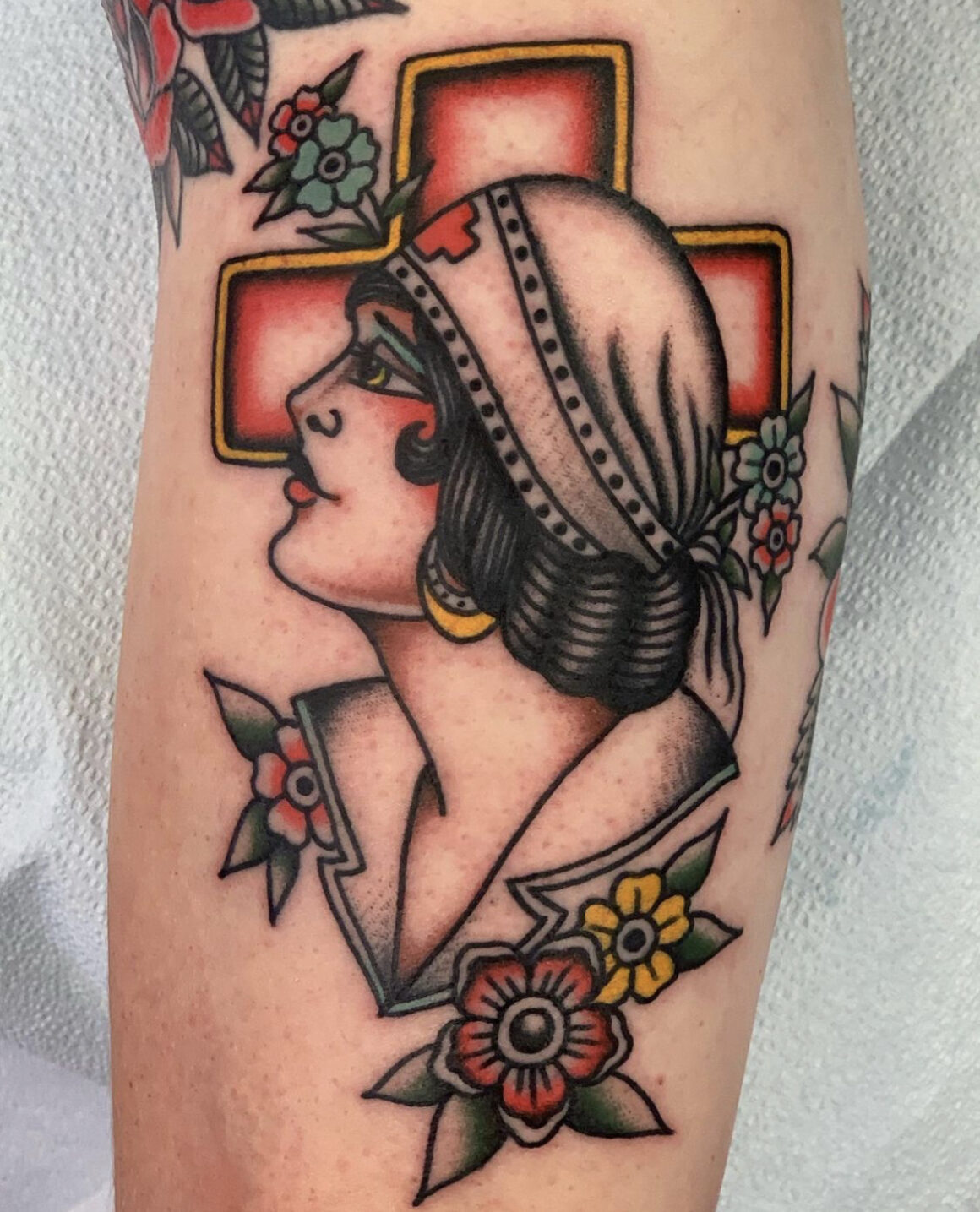
The story of the Rose of No Man’s Land dates back to the time of the First World War. It was a time of unimaginable atrocity and tremendous suffering. Soldiers of every nation lay dying in trenches and the vision they dreamed of beholding was the sight of a woman dressed in white, like a guardin angel, arriving to tend to their awful wounds.
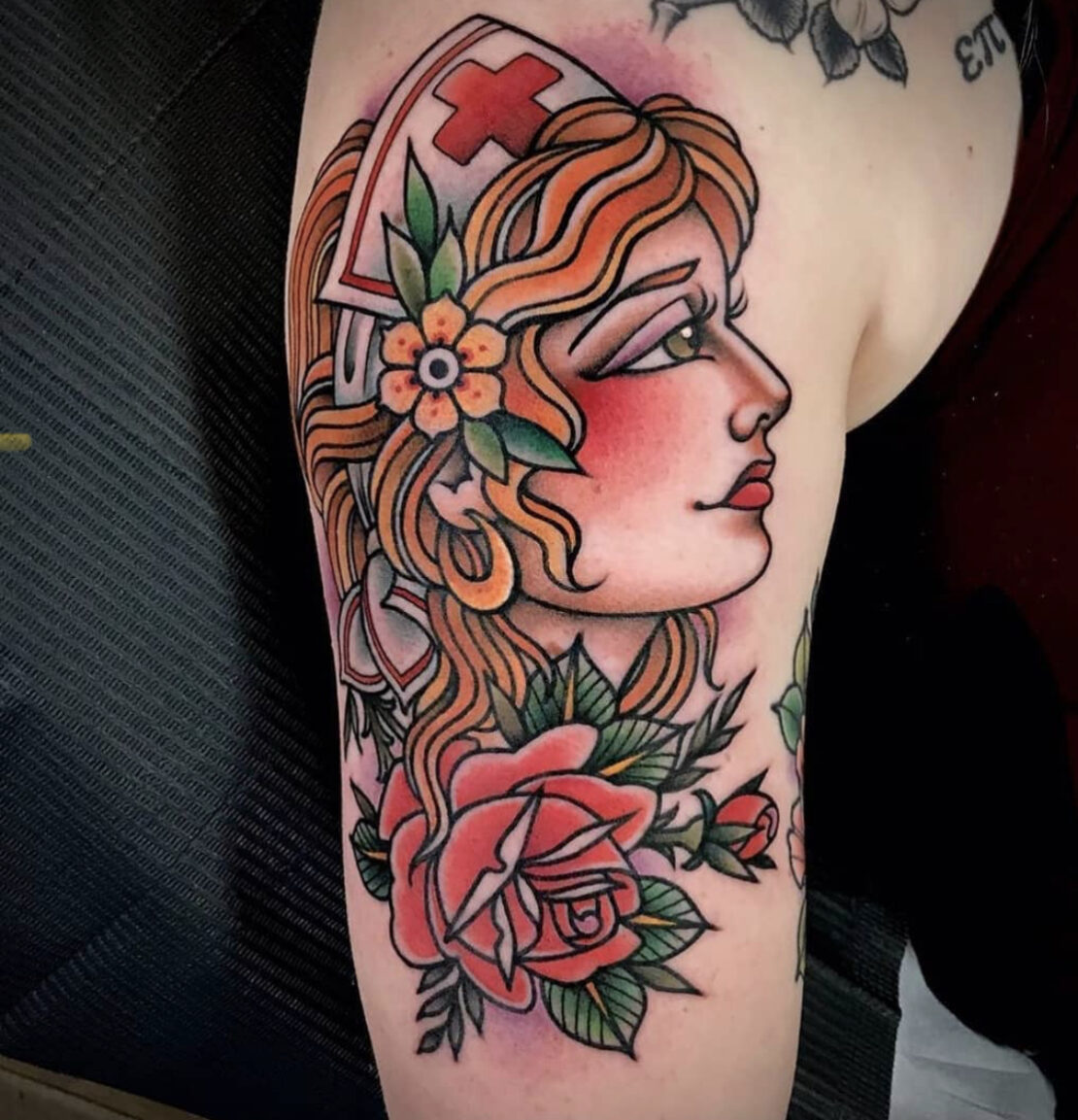
If this angelic creature appeared, you had a chance of staying alive. And once you had survived, she surely deserved a tattoo. But even before tribute was ever paid to them in the form of skin art, the Red Cross nurses who served as volunteers during the First World War were the subject of a song composed in their honour.
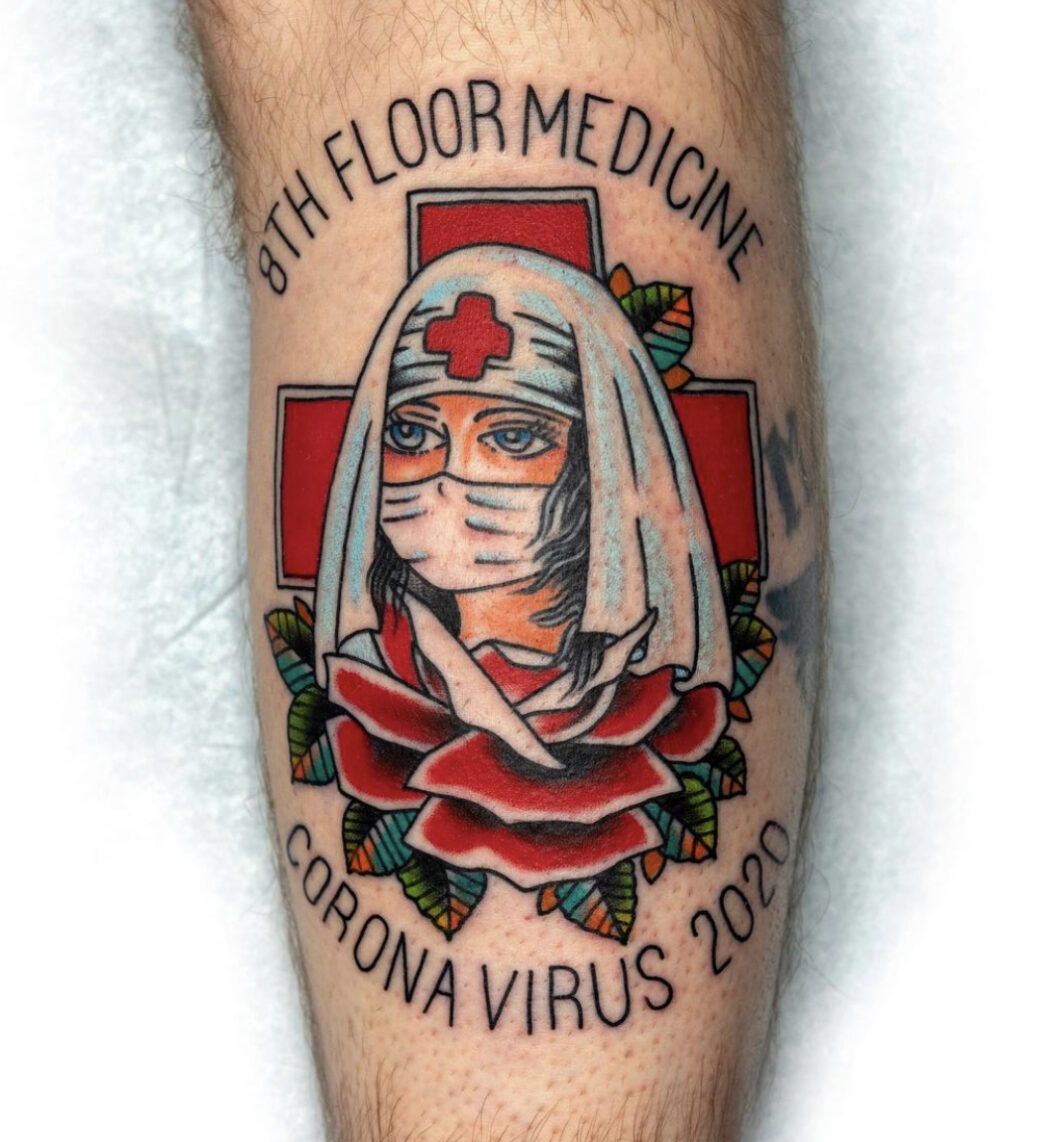
The first ever version of what would become ‘The Rose of No Man’s Land’ was written in French (the title was ‘La Rose Sous les Boulets’) and was recorded by Leo Feist as far back as 1918, the year when the Great War came to an end.
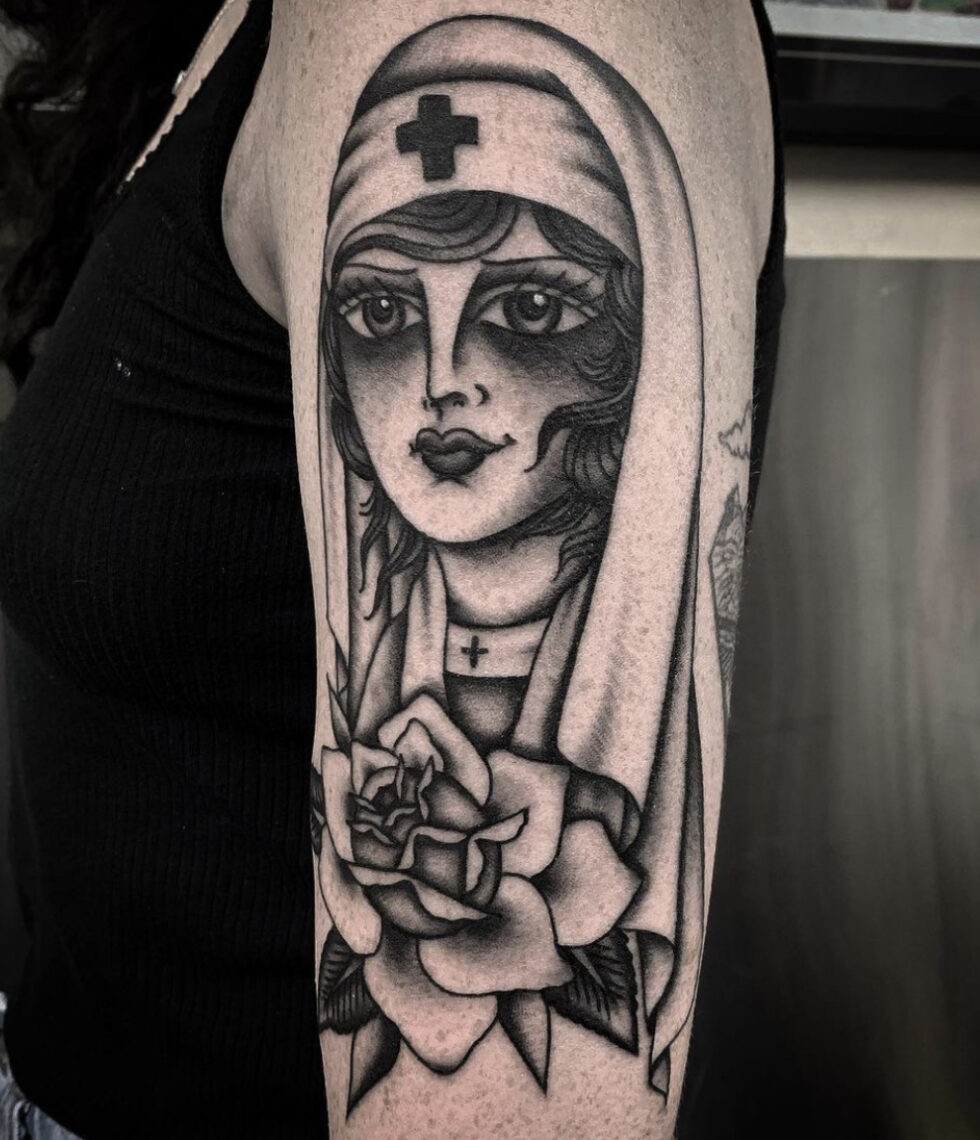
The English version was subsequently produced by Jack Caddigan and James Alexander Brennan and became famous the world over thanks to the voice of Harry McClaskey (also known as Henry Burr) at the end of another awful conflict: the Second World War.
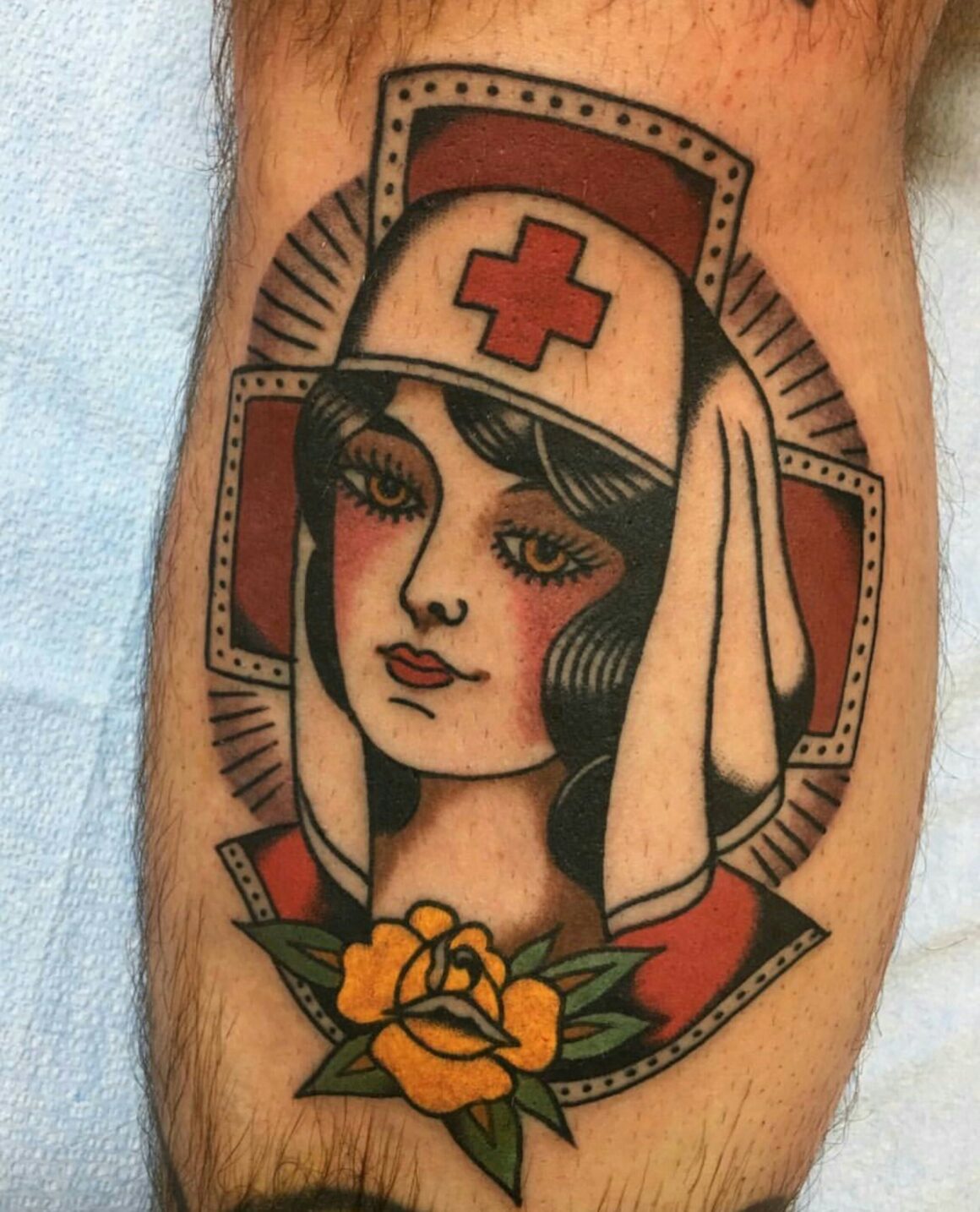
The most famous verse remains to this day: “It’s the one red rose the soldier knows / It’s the work of the Master’s hand / Mid the War’s great curse, Stands the Red Cross Nurse / She’s the Rose of No Man’s Land”.
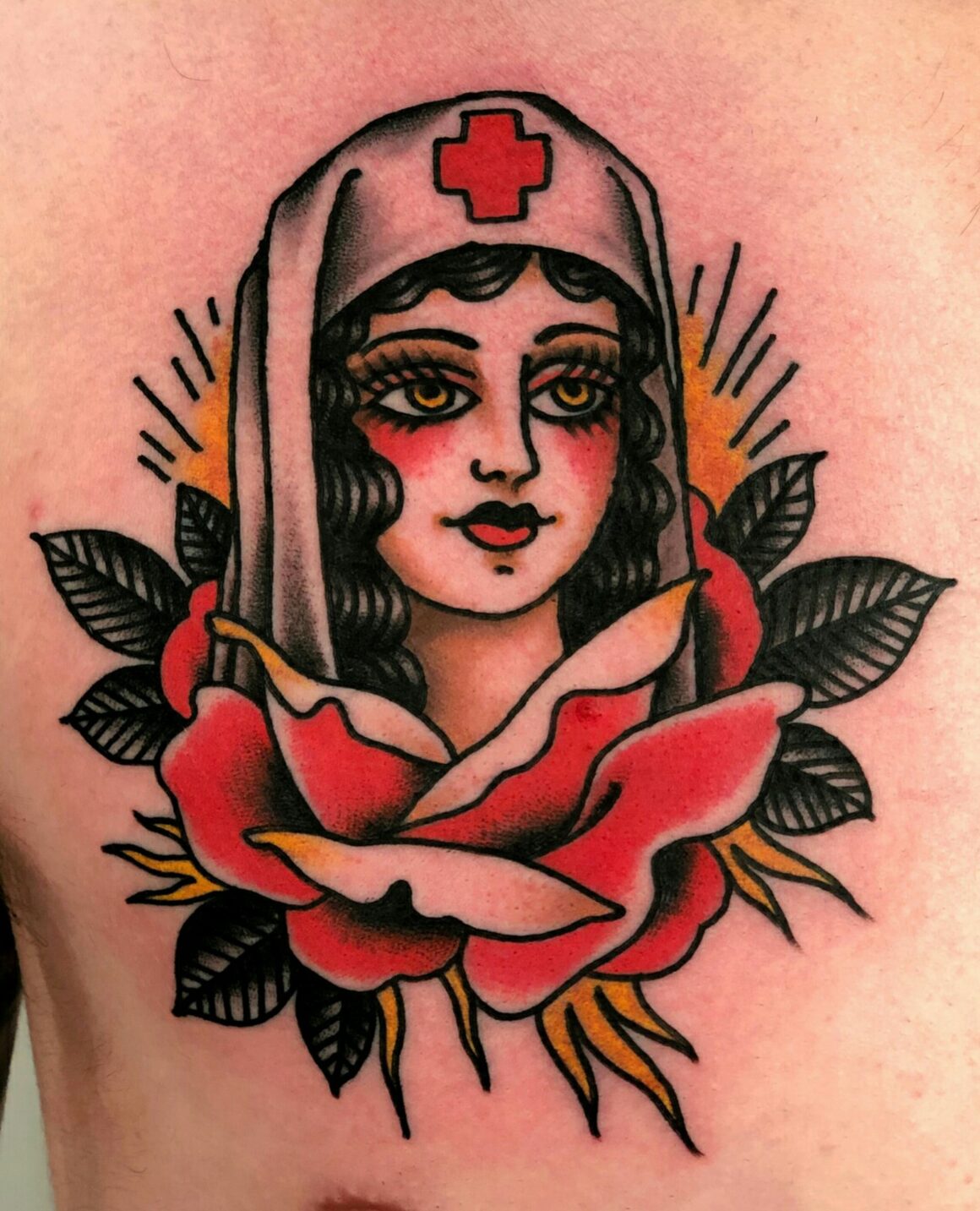
During the first half of the twentieth century, both the French and English versions became extremely popular songs and this gave rise to the creation of a specific tattoo in honour of this iconic female figure. Who first came up with it is impossible to say, but flashy examples of the Rose Of No Man’s Land appear in the sketchbooks of tattoo pioneers such as Gus Wagner (1872-1941), Norman “Sailor Jerry” Collins (1911-1973) and a number of others. Naturally enough, all the tattoo artists of the day wanted to pay tribute to the heroic Red Cross nurses.
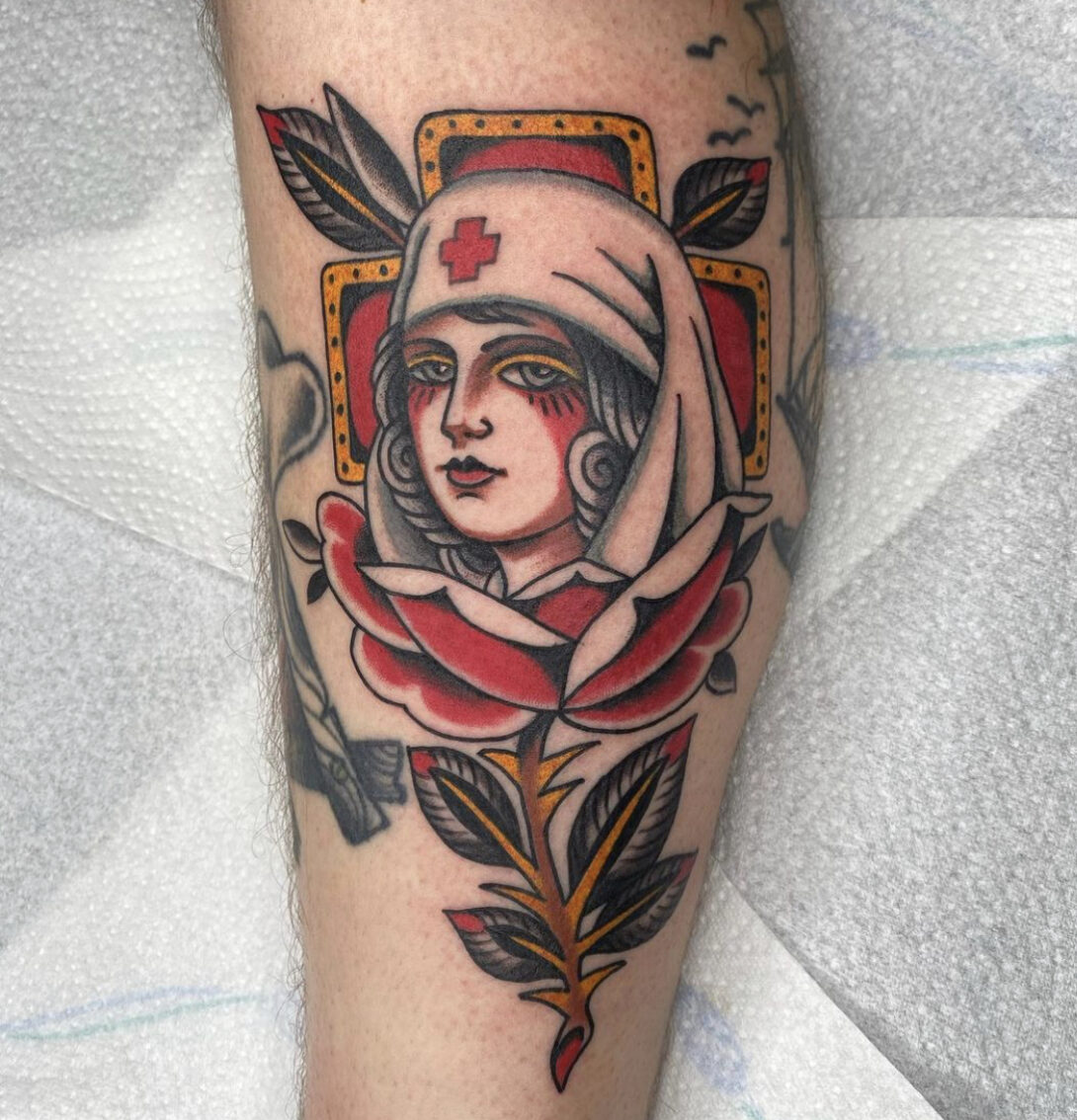
This subject is still popular in the third millennium and it is utterly unmistakeable: a woman’s face in the Traditional/Old School style with a nurse’s cap and, an essential detail, a prominent red cross in the centre of the design.
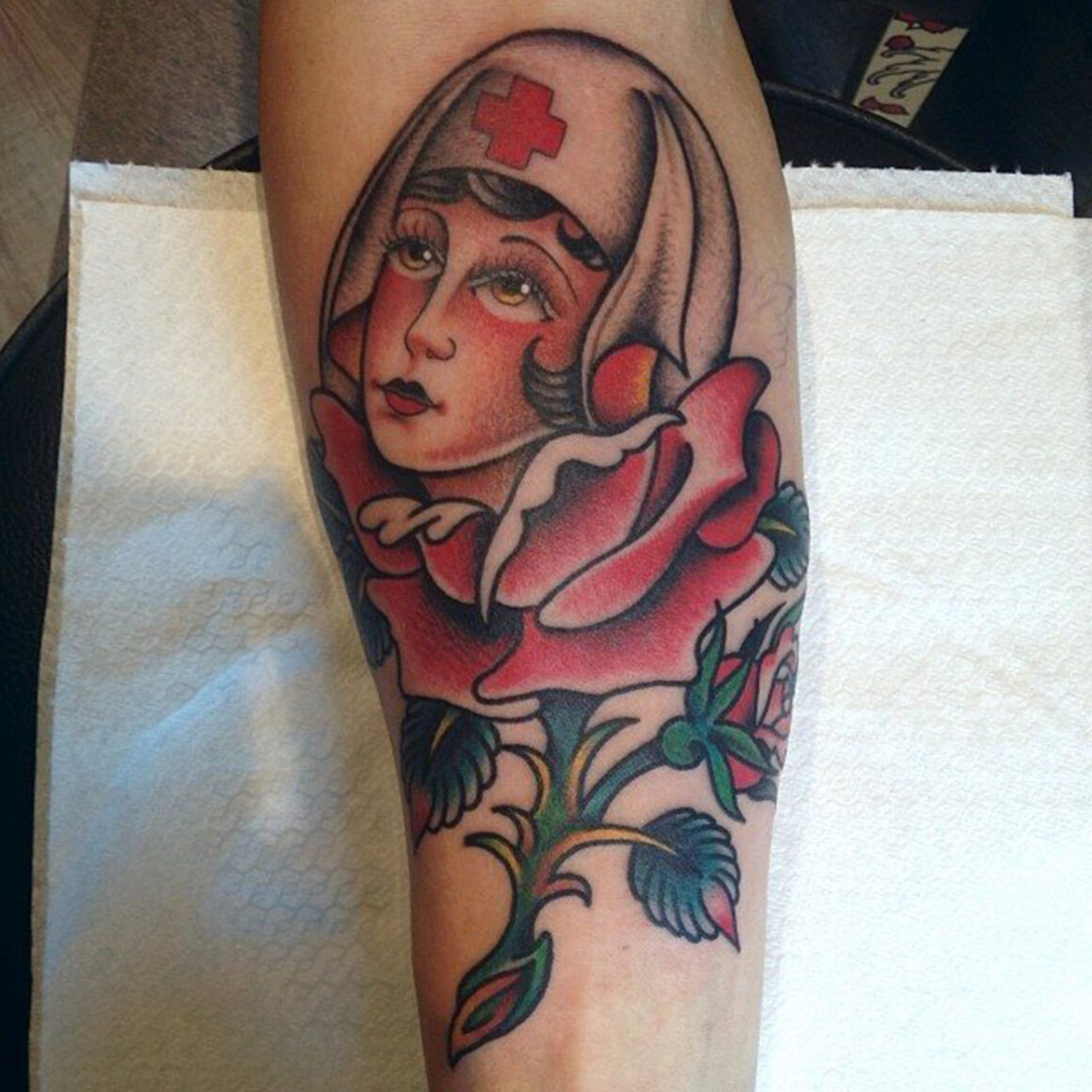
Another, larger cross, may appear in the background and the girl’s face is often adorned with blood red roses. So its symbolic meaning is now clear: many thanks to those who, with so much courage, have saved our lives. This is a true classic in the universe of tattoo art.
